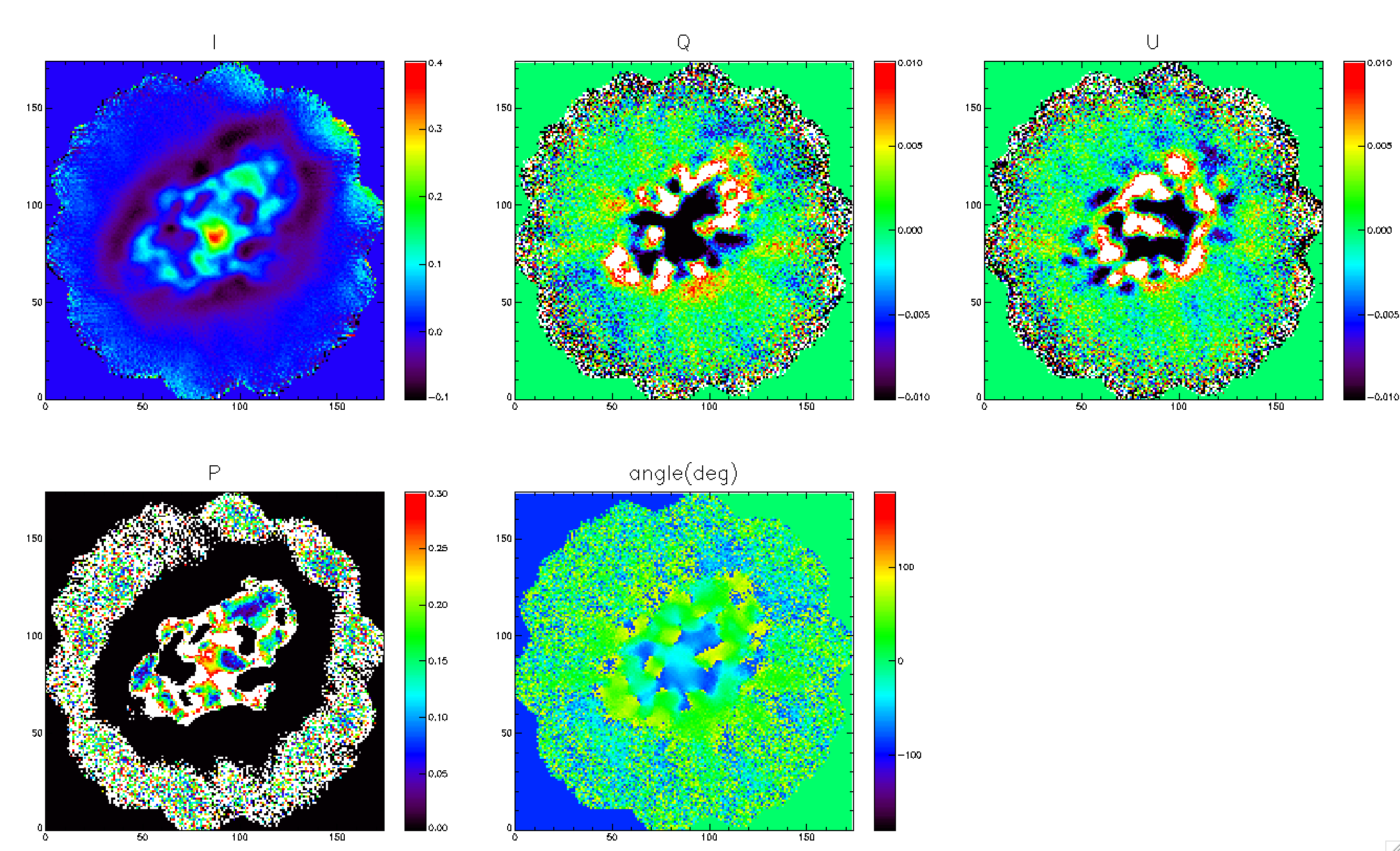Contents
February 09th 2015
10h. The first part of the NIKA Polar Team arrived: Andrea, Alessia, Nicolas.
12h. Helping the open pool team to make observations.
February 10th 2015
10h. The rest of the NIKA polar team arrived: Vincent and Philippe.
11h. mppsync does not work with the current version of the acquisition. We update the version 6470 only on the mppsync instrument and everything started to work.
13h. Polariser, HWP and WG put into the beam at the nominal position.
14h. We performed several tests to check the best configuration of the polariser. The question was: is it really necessary to put an aluminum plate in order to mask all the mechanical parts which turns in front of the cryostat? If we do this, we must recule the WG by 1-1.5 cm in the direction of the cryostat window running the risk to loose some sky photons.
In the following plot some results of our tests (the background is 300K, the mechanical rotation is 3Hz):
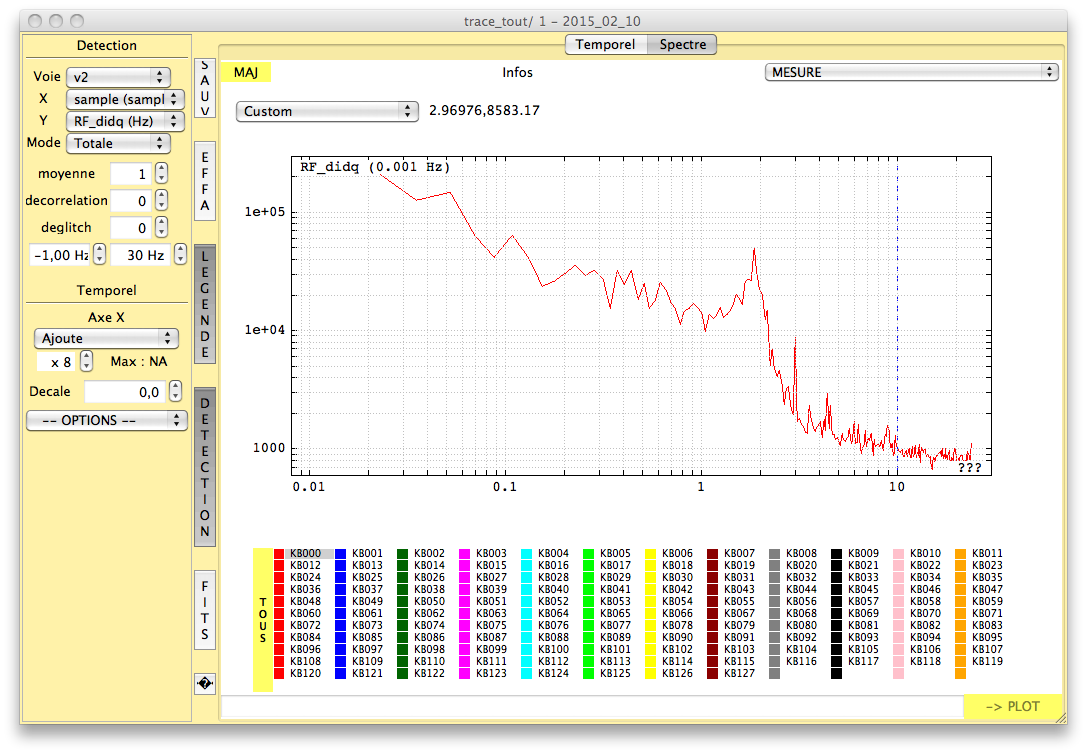
Spectrum of the signal with aluminum foils closing the window (we want to test if any armonics can be in the signal by magnetics, electrical or vibration spurious signals.
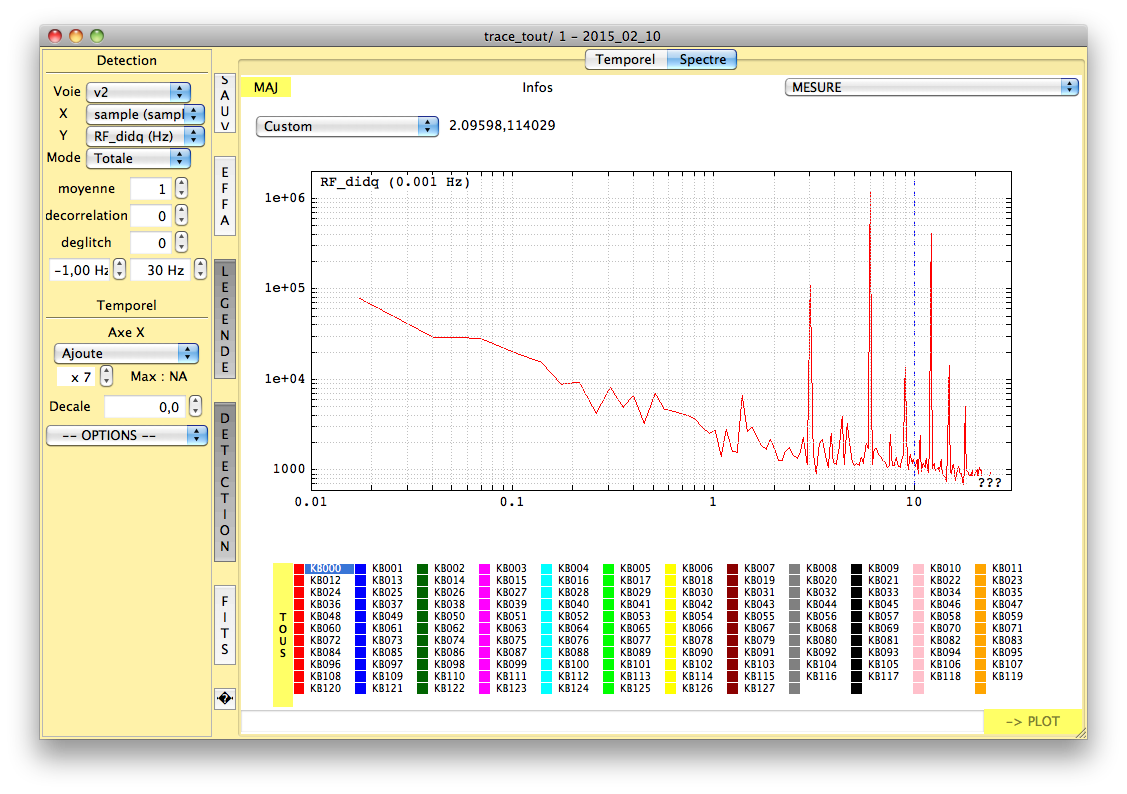
Spectrum of the signal with the cryostat window open, without the plate.
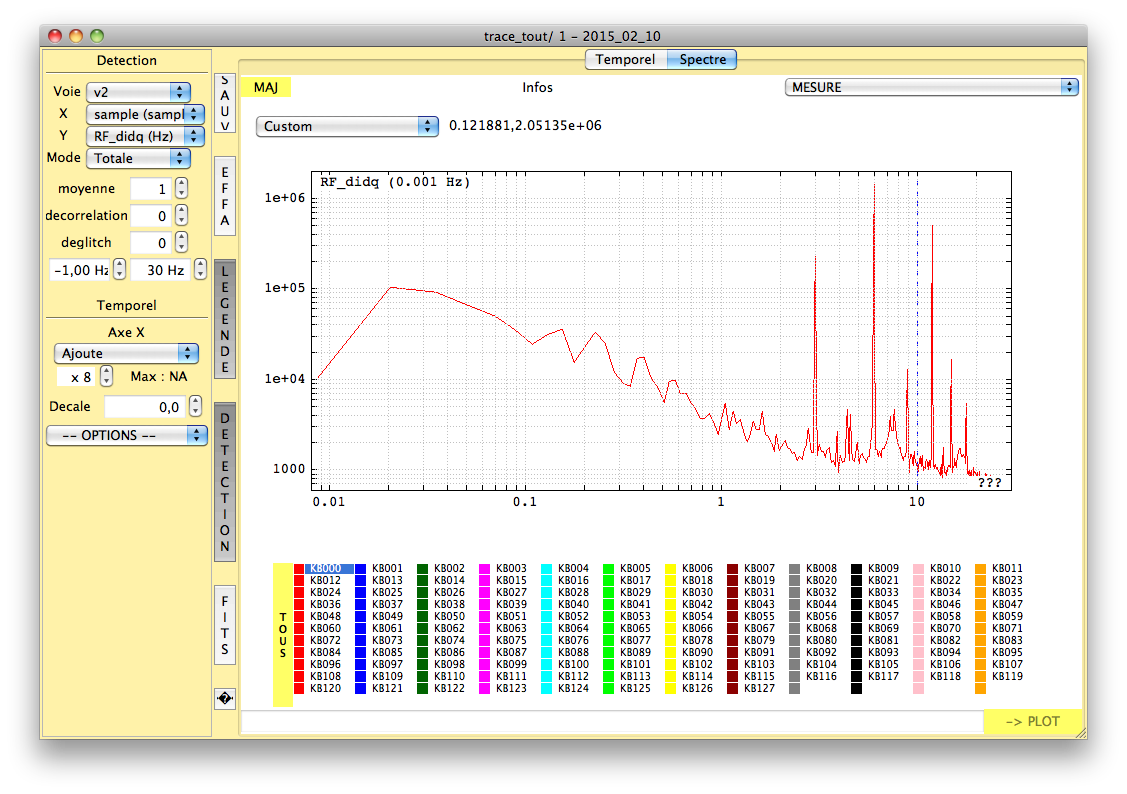
Spectrum of the signal with the cryostat window open and the plate.
We conclude:
1) The stray signal is small but present. The residual signal is few per cent at 1xOmega, much less for the others armonics.
2) Very small differences with the plate or without the plate.
We Decide to keep the configuration without the plate for the rest of the observing campaign.
The mechanical rotational frequency is 2.98 Hz, The acquisition frequency is 47.68 Hz. This means 4 indipendent points per HWP tour.
19h. We should start at 22h. From 18h to 22h XPOL is observing the same source (Quasars) we have planned to observe this night. The wheather is really bad (opacity between 0.4-0.5). Hoping is getting better for the night.
23h. We are observing with the HWP and WG. The opacity is still high (about 0.4). Here is the spectra for the two arrays.
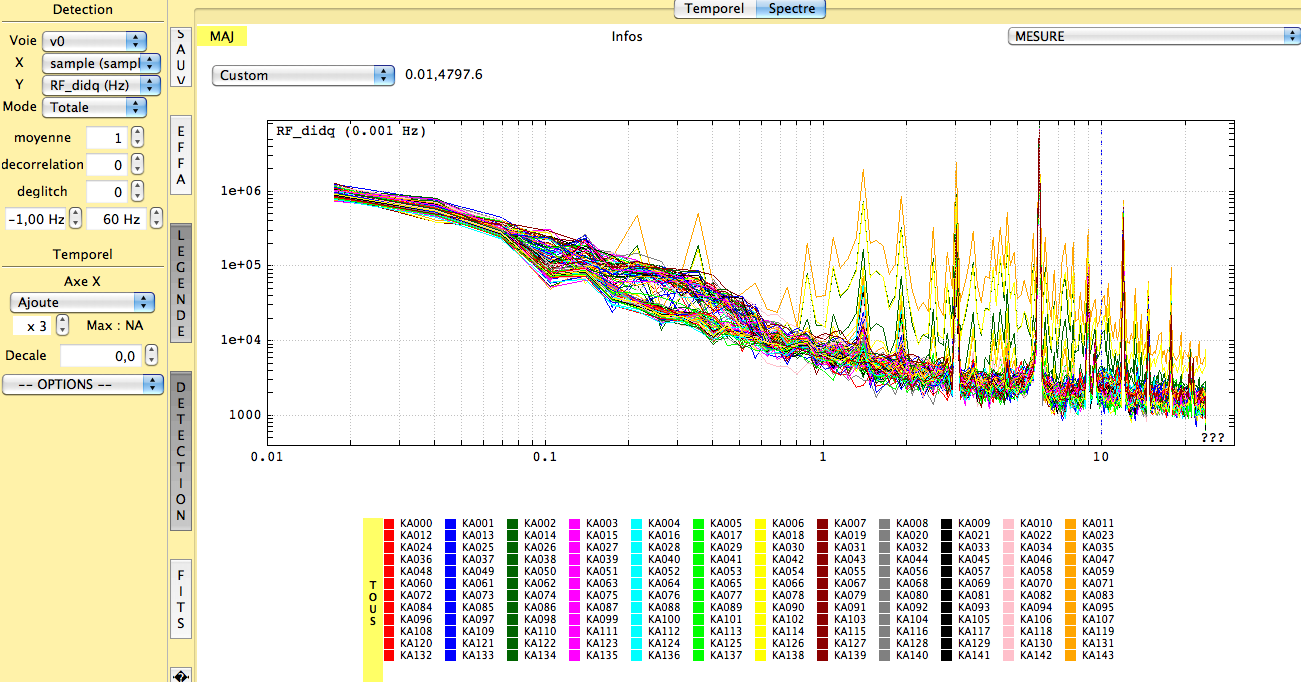
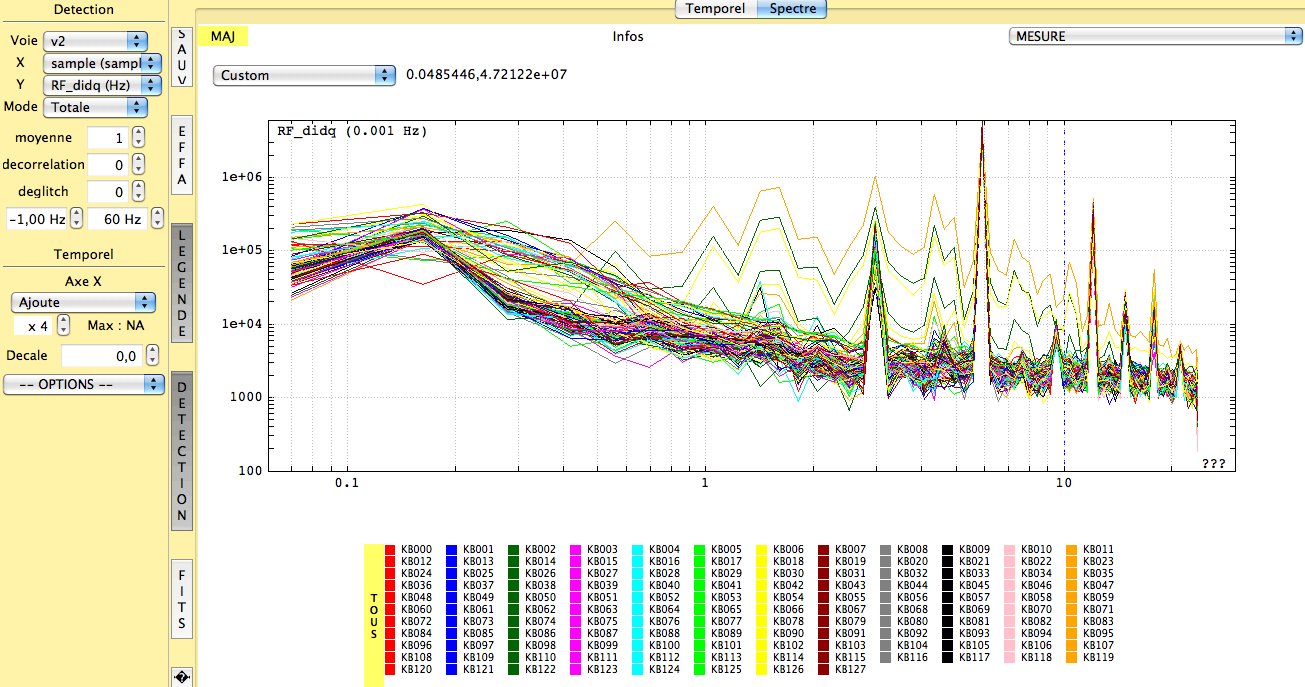
February 11th 2015
02h. Observations of several quasars. Observation of Jupiter (see figure below).
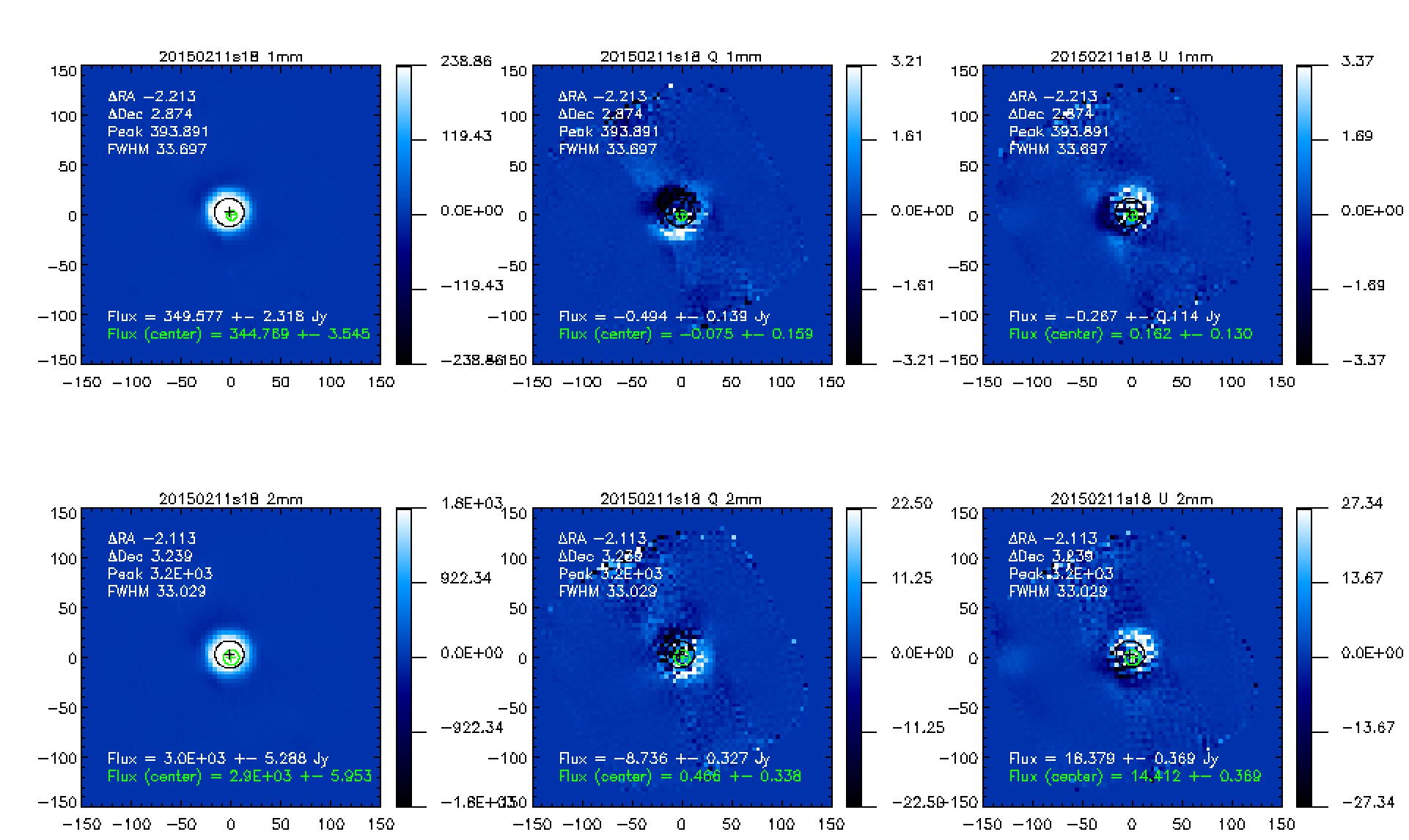
If we consider Jupiter as a non-polarised source the instrumental polarisation is 1.2%
18h. Observations started. Opacity is high (0.5). We started with Uranus. Then Crab nebula is planned.
21h. Observations stopped because of the snow.
February 12th 2015
We started observations at 18h with very bad whether. It lasted almost 4 hours then the opacity started to decrease. In the first 4 hours we observed Uranus, making focus, pointings and geometries. Then we switched to the CRAB nebula.
February 13th 2015
FIRST DETECTION OF THE CRAB NEBULA POLARISATION AT 1MM AND 2MM!!!
This map is produced using 11 scan 8 X 6 arcmin. We applied a first quick calibration (opacity correction is done - at 1mm channel it goes from 0.3 to 0.15)
1mm Channel 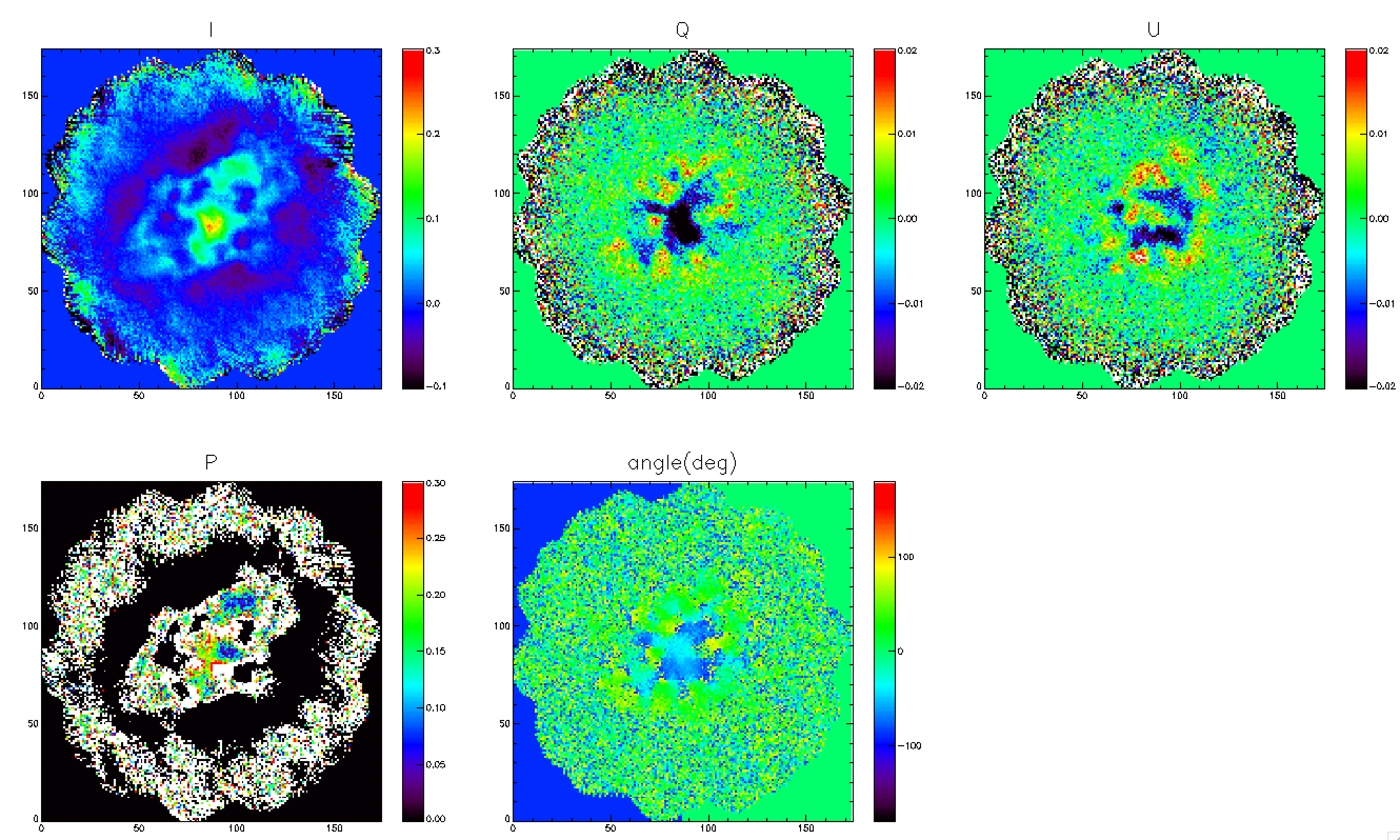
2mm Channel 